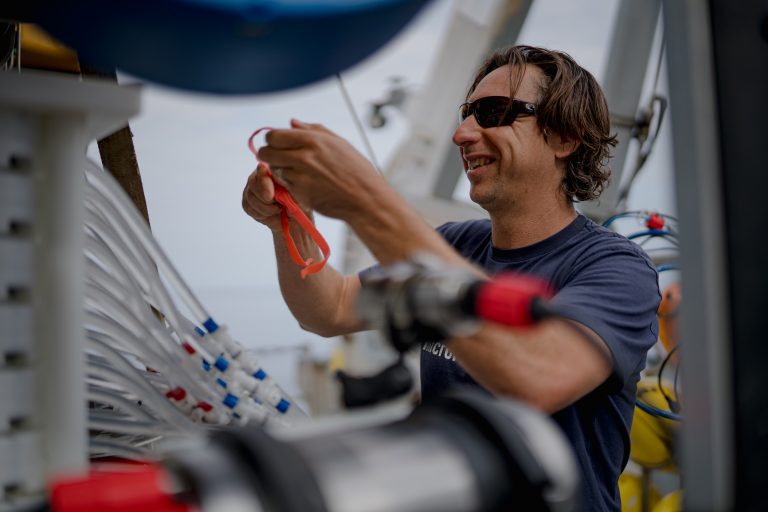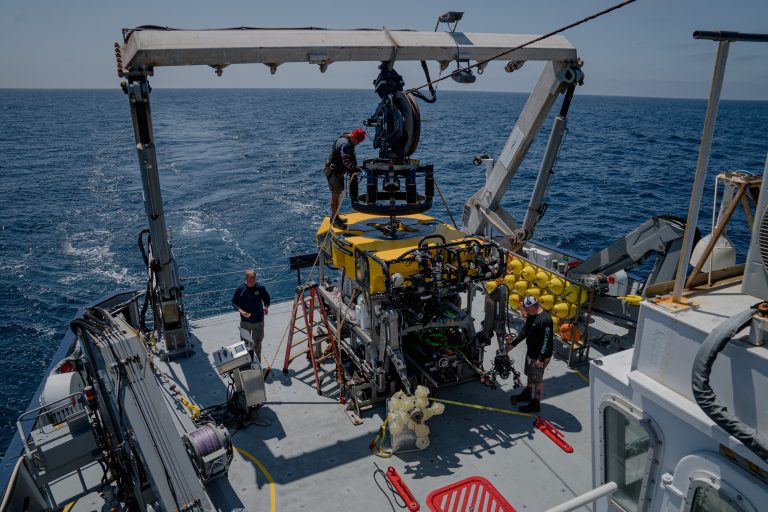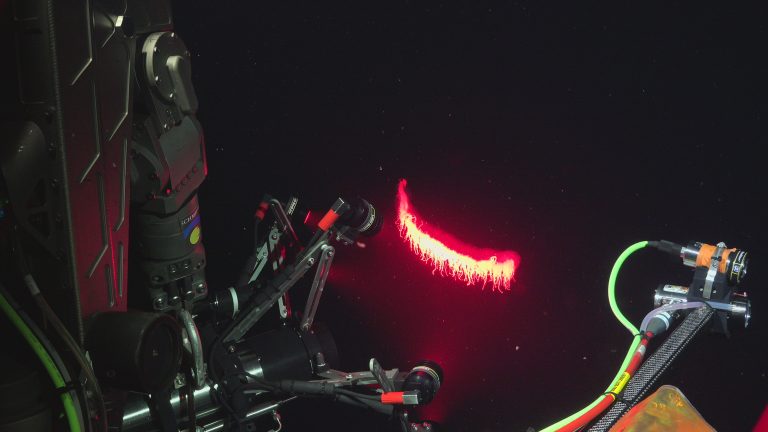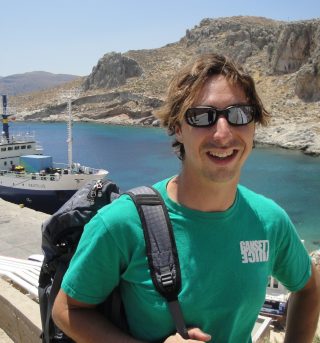When the scientific leads of this expedition (Dr. Kakani Katija, Dr. Robert Wood, Dr. David Gruber, and myself) proposed our project to the Schmidt Ocean Institute, we knew it was highly ambitious and would require years of technology development to achieve our collaborative goals. Creating one new deep-sea instrument that can operate successfully in the field is hard enough to accomplish. This project took technology development to the next level and ultimately involved four different complex systems. I am proud to say after ten days at sea, these four pieces of equipment worked in concert with each other to achieve rapid, robust growth midwater biology exploration. Layer on top of this preparation during the COVID-19 pandemic, as well as the customary challenges like weather and logistics, and it becomes really staggering to stand back and appreciate what we’ve been able to pull off in the past ten days.

The ROV SuBastian was the perfect deep-sea ROV to combine MBARI’s EyeRIS and DeepPIV imaging systems, along with the RAD2/SuPR Sampler system. The vehicle’s physical payload options are quite generous, and there is ample fiber optic/ethernet telemetry to support the extremely high data rates that the cameras require. But most important of all: the SuBastian ROV team and the marine techs did a really incredible, superb job with integrating all of our systems and operating them over the course of the expedition. We are deeply grateful for their intellect, skill, and hard work; this project would never have been so successful without it. And, of course, the crew of the R/V Falkor provided, in my opinion, the best operational support a scientist could ever ask for on an oceanographic expedition. The level of talent aboard this ship is really something special, and it is what sets the Schmidt Ocean Institute apart.

So what did we really accomplish on this cruise, scientifically? Well, it will take many months- perhaps a couple of years- to really answer this question. We imaged and sampled many interesting (and perhaps new) midwater siphonophores, ctenophores, polychaetes, and other very delicate invertebrates. Our hard drives are chock full of data, and we have many good, viable tissue samples preserved in situ and frozen. The deck is now stacked in our favor for discovery- I am so looking forward to convening soon with all of the scientists involved with this project, and we’ll take our time to survey what we think we found and what’s worth investing in further analysis. And while we’ve achieved our vision for this project, we’re already discussing what we want to do on our next expedition(s) to advance the technology even further. It’s the best possible outcome: solid, promising results and a pathway forwards for future research!


